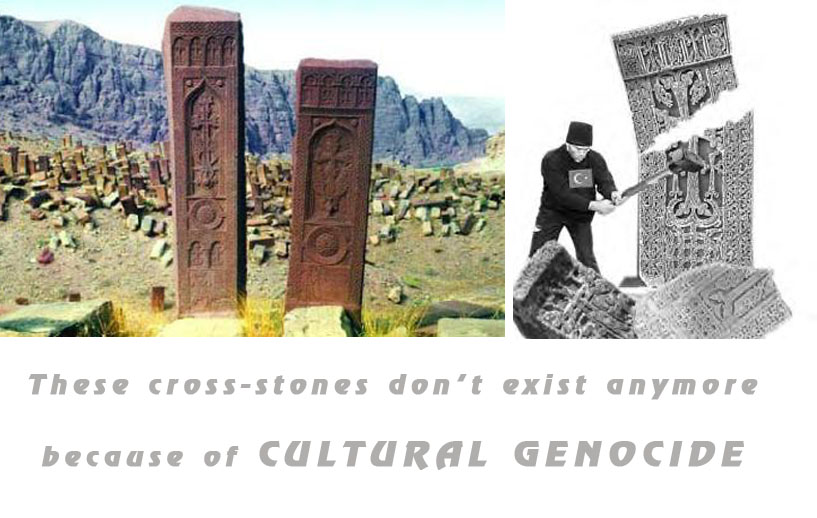Культурный геноцид, термин, введенный во второй половине XX века, используется для обозначения преднамеренного создания социально-культурных условий для искусственного стирания национальной и культурной идентичности народа. Согласно официальным данным, составленным и представленным армянской Патриархией Константинополя турецкому правительству в 1912-1913 годах, на территории Османской империи насчитывалось более 2000 церквей и монастырей (в том числе уникальные ранние христианские памятники IV-V веков). Их большая часть была ограблена, сожжена и разрушена во время Геноцида армян. С прекращением этнических чисток армян политика младотурков, направленная на разрушение их культурного наследия с каждым годом набирала обороты. После массового убийства и изгнания армян турецкие власти продолжали удалять, камень за камнем, свидетельства тысячелетней армянской архитектурной и художественной истории. Большое количество памятников архитектуры были разрушены или преобразованы в мечети и караван-сараи.
Один из свидетелей армянских погромов - арабский юрист Файез эль Гусейн пишет в своих воспоминаниях: "После армянских погромов правительство учредило комиссии, которые занимаются продажей брошенного имущества. Армянские культурные ценности продаются по ничтожной цене... Однажды я пошел в церковь, чтобы увидеть, как осуществляется продажа этих вещей. Двери армянских школ закрыты. Научные книги используются турками на рынках для упаковки сыра, хурмы, семечек..."





